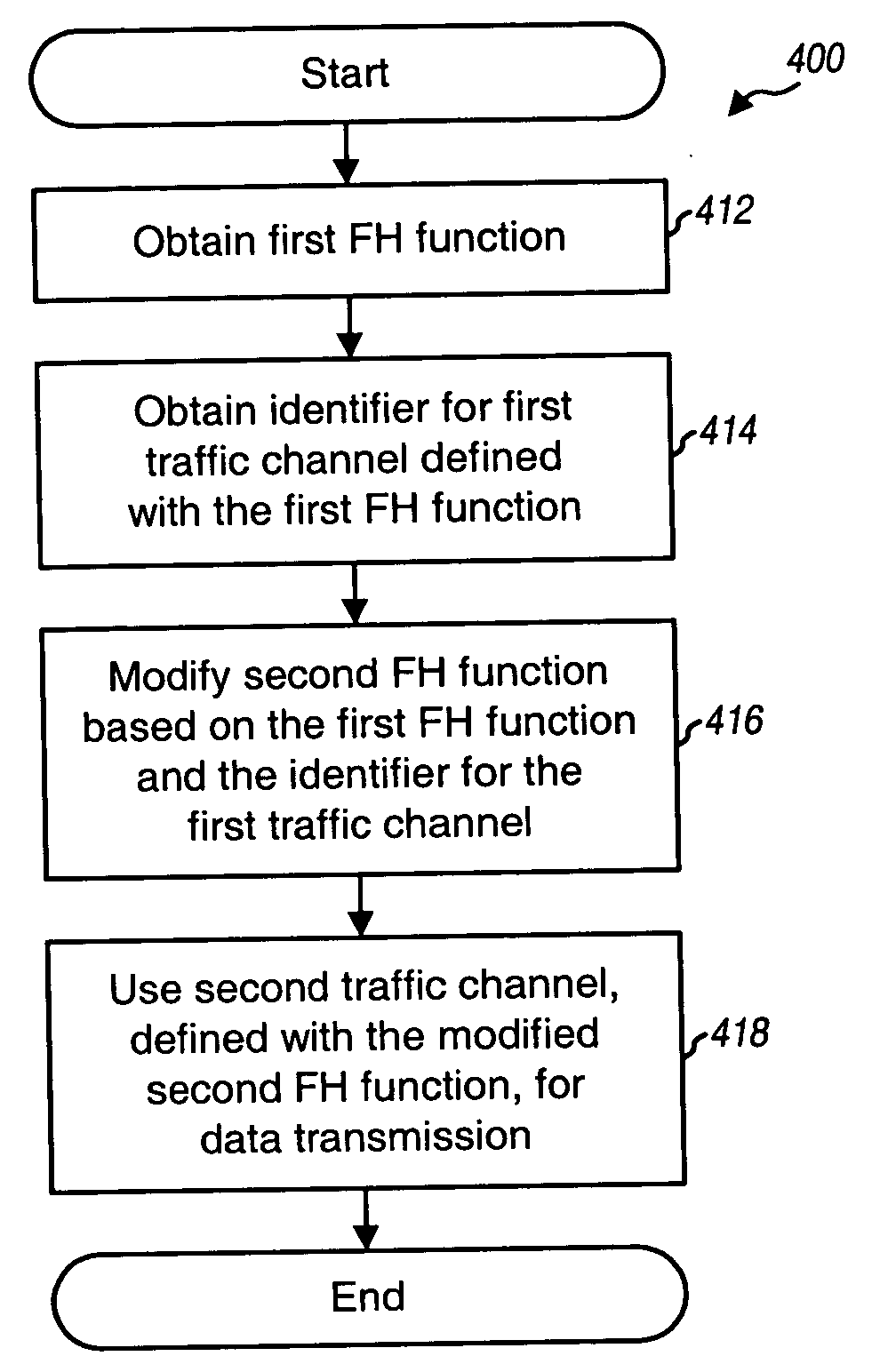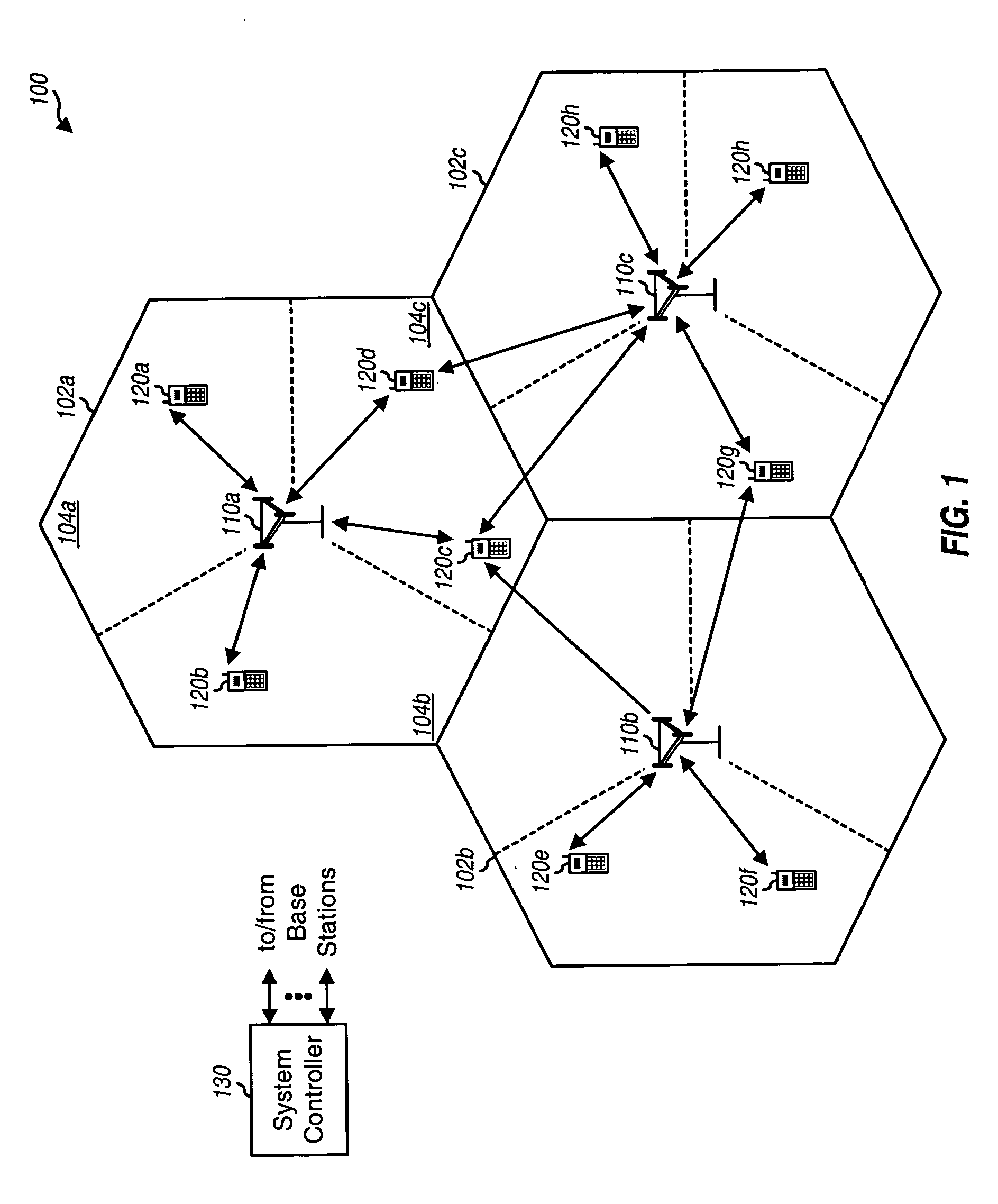Interference management for soft handoff and broadcast services in a wireless frequency hopping communication system
a communication system and wireless frequency hopping technology, applied in the field of communication, can solve problems such as receiving interference, soft handoff is complicated by the use of frequency hopping, and interference to users
- Summary
- Abstract
- Description
- Claims
- Application Information
AI Technical Summary
Benefits of technology
Problems solved by technology
Method used
Image
Examples
second embodiment
In the first scheme, for a user that is in soft handoff with multiple sectors, one of the sectors is designated as the “serving” or “anchor” sector, and only the FH functions for the other sectors need to be modified.
For example, user x may initially communicate with sector s1 and is assigned traffic channel r by sector s1. User x may subsequently move within the coverage of sector s2 and is assigned traffic channel v by sector s2. If sector s1 is designated as the serving sector, then user x continues to communicate with both sectors s1 and s2 on traffic channel r, which was assigned by sector s1. In effect, the FH function ƒs1(r,T) for sector s1 is used as the FH function ƒsho(r,T) for the soft-handoff user. The other users in sector s2 would then modify the FH function ƒs2(k,T) for sector s2 to be orthogonal with traffic channel r, as follows: f~s2(k,T)={fs2(k,T)if fs2(k,T)≠fs1(r,T)fs2(v,T)otherwise.Eq (5)
Alternatively, user x may initially communicate with sector s1 ...
PUM
 Login to View More
Login to View More Abstract
Description
Claims
Application Information
 Login to View More
Login to View More - R&D
- Intellectual Property
- Life Sciences
- Materials
- Tech Scout
- Unparalleled Data Quality
- Higher Quality Content
- 60% Fewer Hallucinations
Browse by: Latest US Patents, China's latest patents, Technical Efficacy Thesaurus, Application Domain, Technology Topic, Popular Technical Reports.
© 2025 PatSnap. All rights reserved.Legal|Privacy policy|Modern Slavery Act Transparency Statement|Sitemap|About US| Contact US: help@patsnap.com



